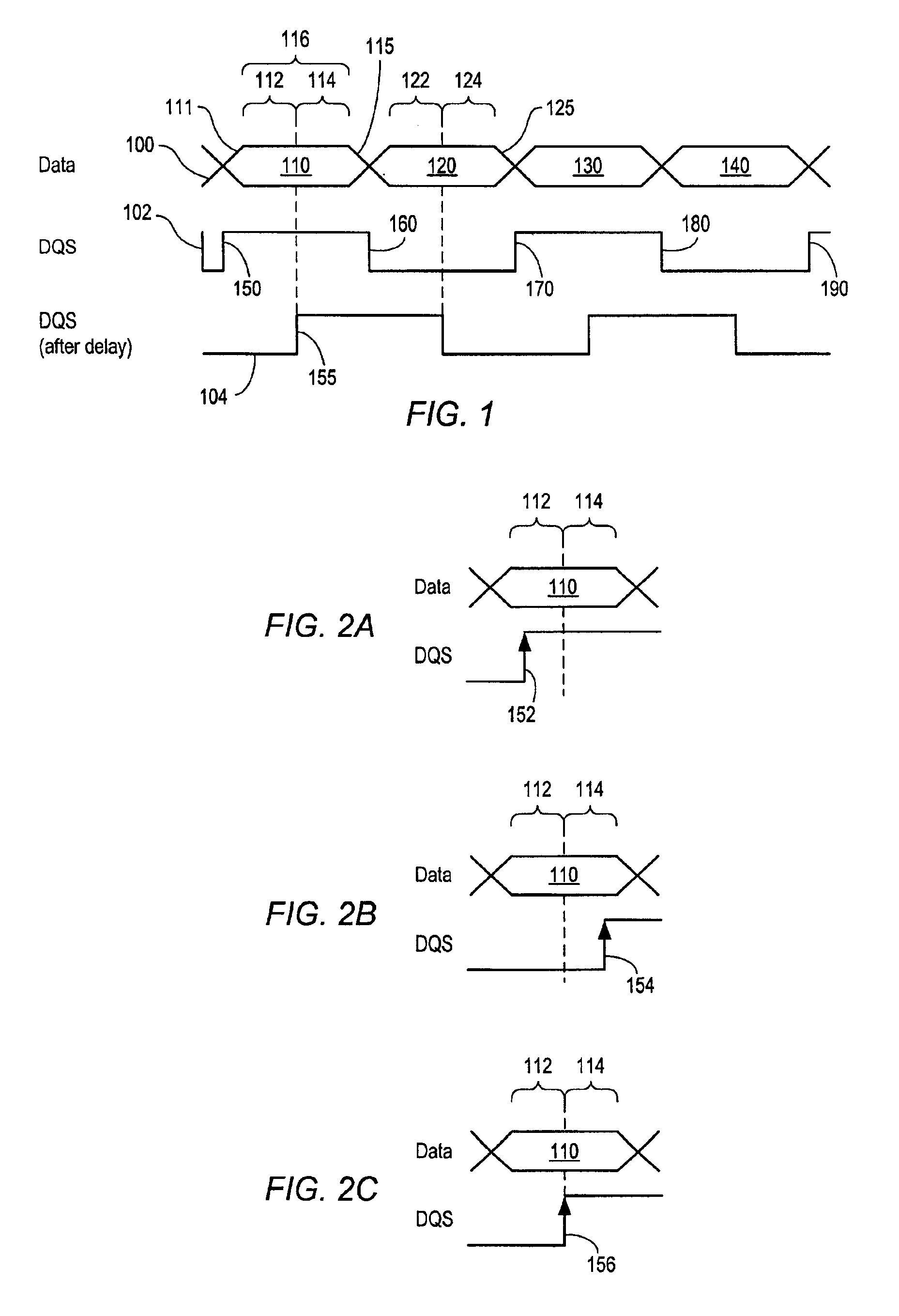Multimode system for calibrating a data strobe delay for a memory read operation
a multi-mode system and data strobe technology, applied in the field of multi-mode systems for calibrating data strobe delays for memory read operations, can solve the problems of not solving the problem of timing a dqs, requiring a certain amount of setup time, and capturing purious data, so as to achieve flexibility in its use and application.
- Summary
- Abstract
- Description
- Claims
- Application Information
AI Technical Summary
Benefits of technology
Problems solved by technology
Method used
Image
Examples
Embodiment Construction
[0034]FIG. 4 is a block diagram of a processor-based system 200, such as a workstation or server, incorporating features implementing an embodiment of the present invention. The system 200 operates under control of at least one microprocessor 210, a display 220 and one or more user interface devices 230 (such as keyboard, mouse, track ball, etc.).
[0035]The processor 210 is connected to a local device control circuitry 240 (also referred to as a “host bridge”), which includes circuitry that controls data and command exchanges with local devices such as the display 220 via an accelerated graphics processor (AGP) 250 and memory 260, which may in a typical system will include multiple DIMMs and / or other suitable memory modules or media.
[0036]The local device control circuitry 240 is connected to a peripheral device control circuit 270 via a bus such as PCI bus 280.
[0037]The local device control circuitry 340 may in many respects include conventional or known circuitry (with the addition...
PUM
 Login to View More
Login to View More Abstract
Description
Claims
Application Information
 Login to View More
Login to View More - R&D
- Intellectual Property
- Life Sciences
- Materials
- Tech Scout
- Unparalleled Data Quality
- Higher Quality Content
- 60% Fewer Hallucinations
Browse by: Latest US Patents, China's latest patents, Technical Efficacy Thesaurus, Application Domain, Technology Topic, Popular Technical Reports.
© 2025 PatSnap. All rights reserved.Legal|Privacy policy|Modern Slavery Act Transparency Statement|Sitemap|About US| Contact US: help@patsnap.com



